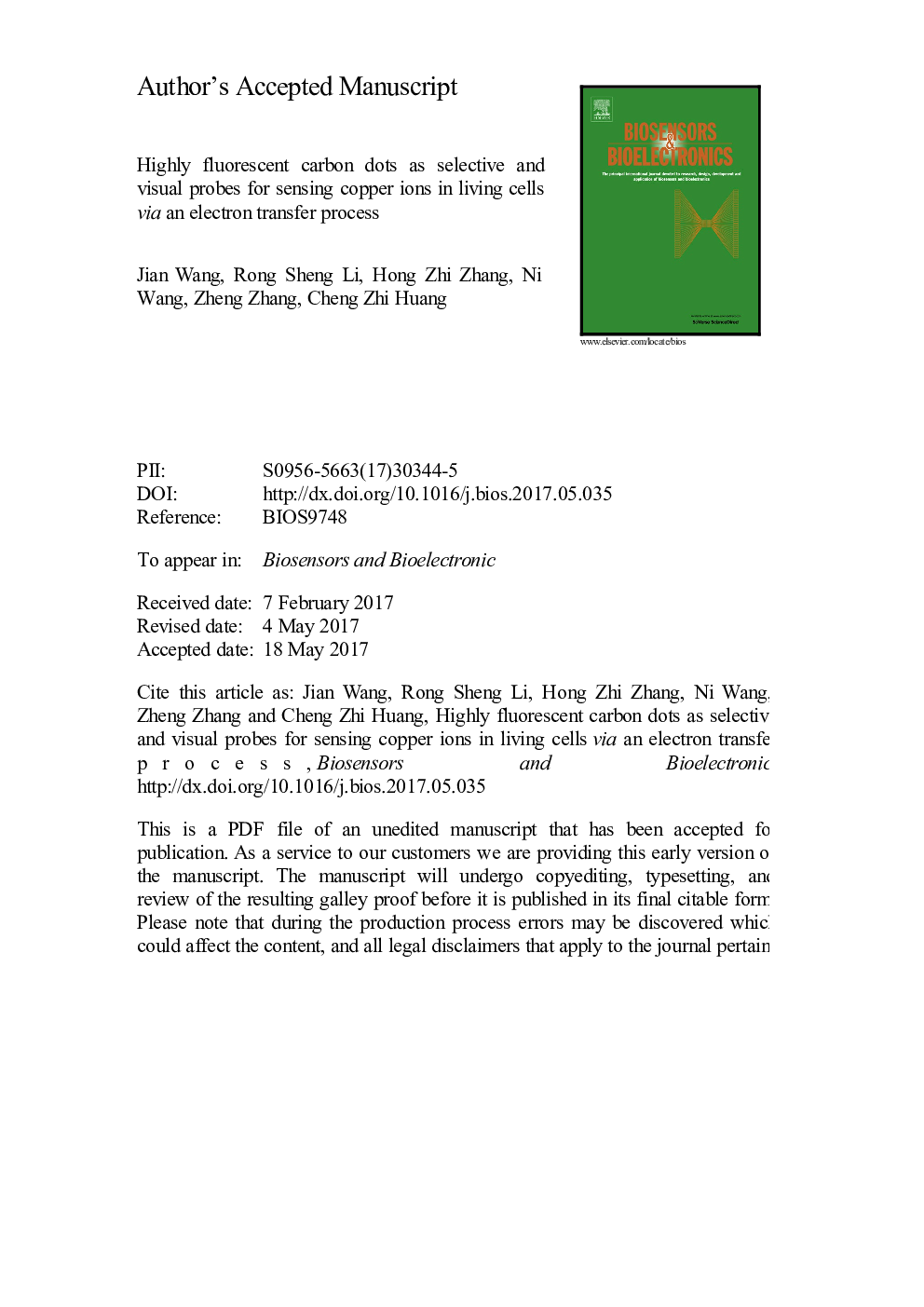| Article ID | Journal | Published Year | Pages | File Type |
|---|---|---|---|---|
| 5030981 | Biosensors and Bioelectronics | 2017 | 27 Pages |
Abstract
As an integral part of many important enzymes, Cu2+ is involved in a number of vital biological processes, which is linked to the oxidative damage and environmental contamination when Cu2+ is excessive. In this work, Cu2+ can be captured by the amino groups of carbon dots (CDs) to form complexes, resulting in a strong fluorescence quenching of CDs via a nonradiative electron transfer process, which offered a rapid, visual, and selective methodology for Cu2+ detection. The probe exhibited a wide response concentration range (0.01-2 μM) to Cu2+ with a detection limit of 6.7 nM. Significantly, the CDs presented excellent biocompatibility and high photostability, which were applicable for the visualization of Cu2+ dynamic invasion into living cells and Tilapia mossambica. Furthermore, the toxicity of Cu2+ ions to living cells could be inhibited with CDs by the formation of complexes.
Related Topics
Physical Sciences and Engineering
Chemistry
Analytical Chemistry
Authors
Jian Wang, Rong Sheng Li, Hong Zhi Zhang, Ni Wang, Zheng Zhang, Cheng Zhi Huang,
